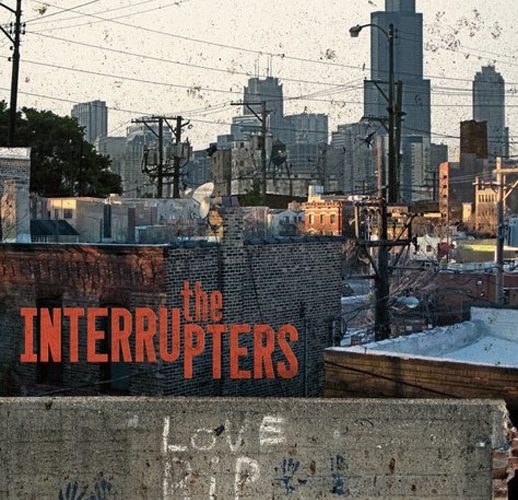Chicago is plagued with a violence epidemic, a corrosive force infecting its inhabitants. Murder rates grow while a generation of young people disappears. City officials declared their own town a war zone, asking the federal government to send in the National Guard. Ironically, the city that gave us Barrack Obama and his “Audacity of Hope” campaign has seemingly run out of it. What is to be done when the institutions can do nothing but watch murder itself become an institution?
The Interrupters, the new film from acclaimed storytellers Steve James and Alex Kotlowitz, return to the city that birthed both of their major works (Hoop Dreams and the book There Are No Children Here, respectively) to follow along with a group of felons and ex-convicts who hit the streets to intervene in conflicts, trying to fight back the wave of violence with a series of small ripples. The Interrupters is a visceral, intimate experience that is marked with an almost unusual amount of honesty. In a culture where everyone seems prepared to put up a facade and become camera ready, the subjects in this film doesn’t seem to care a lick that there’s one in their presence. The candid nature allows for a gripping account of life as it is; life as it never should be.
This is reflected in the pasts of each member of CeaseFire’s violence interrupters. At one meeting, there is approximately 500 years of combined jail time among these people, giving them the duality of wisdom and credibility. The kids know to listen to Ameena Matthews, the daughter of notorious gang leader Jeff Fort. They know that Cobe Williams “went hard” and spent twelve years in jail for drug trafficking and murder, that not only did Eddie Bocanegra spend fourteen years in prison for murder but also filled up an entire parking lot with stolen cars. When a student has some issues with violence, he does not feel comfortable sharing them with his white-bread, suburbanite teacher. However, he’s more than willing to spill to Eddie.
According to CeaseFire’s Illinois chief Tio Hardiman, violence is cyclical, a learned behavior that others pass on in their wake. Even though this is a film steeped in death, this is a film about life, focusing on those left in the devastating wake of violent acts. How does one deal with that anguish, that grief? Who decides to break the cycle and not take another life, which begets another, and another, until the sidewalks are littered with tiny memorials to those fallen? There is a staggering montage featuring a series of street-side memorials for those fallen with the names and ages of the deceased hovering above. It seems to go on forever. All of them have identical materials: flowers, cards, words of remembrance, stuffed animals, empty bottles of alcohol. All of them have identical in their senselessness.
This film does not make the interrupters into super heroes, or show CeaseFire as some sort of magical remedy. They get resistance from local authorities because they aren’t being stringent enough in sharing information (a tactic which would immediately slash the program’s credibility forever). Citizens don’t trust the police because of their hard-line attitudes that treat the symptoms of crime but avoid the reasons for the disease. Certainly not everyone heeds the interrupters’ advice, nor respect their neutrality, as one section shows how dangerous this profession truly is. It’s a balanced effort to show that there are no simple answers to defeating crime (though other summer movies featuring shields and capes will try to tell us otherwise).
To fight something this large, it’s all about the little things. Watching Ameena tirelessly try to help just one girl even though she gets rebuked over and over again because she knows she can get to her. She knows because she was right at that spot as a youth and could have made better choices if there was someone who kept on her. Watching Cobe chip away at the combustible and outlandish Flamo away from prison, a second home where he’s spent 15 of his 32 years. Following the redemption of Eddie, a person who robbed a family of their child, helping other children grieve through art and support. All of these efforts mirroring the film’s one-year chronology, from a scorched summer to spring’s rebirth.
This review could easily devolve into a list of all the moments from this film that surprised, shocked, moved, intrigued, and floored me. It does the difficult job of giving a full look at a problem that we only see pieces of in the news. Filming took place during the murder of Derrion Albert, the young man whose killing outside of his school was uploaded to YouTube. Instead of flying in, “tsk-tsking” the state of affairs and flying out, we get a full breadth of the enormity of this issue combined with the personal sense of being in the bunkers with these extraordinary individuals who are trying to not only break this cycle, but replace it with one of tolerance, of respect, of redemption.
A film about something so dire, and so achingly sad, has no right being this vibrant, thoughtful, and entertaining. It is a remarkable piece of filmmaking that equals the incredible work of its subjects. And that is quite an achievement.
The Interrupters opens in limited release on July 29th.


